NASA Technology In Your Life
NASA Technology in Your Life
How does NASA technology benefit life on Earth? It probably has an impact in more ways than you think! Since 1976, our Spinoff program has profiled nearly 2,000 space technologies that have transformed into commercial products and services. In celebration of Spinoff’s 40th year of publication, we’ve assembled a collection of spinoffs that have had the greatest impact on Earth.
Take a look and see how many you utilize on a regular basis:
Digital Image Sensors

Whether you take pictures and videos with a DSLR camera or a cell phone, or even capture action on the go with a device like a GoPro Hero, you’re using NASA technology. The CMOS active pixel sensor in most digital image- capturing devices was invented when we needed to miniaturize cameras for interplanetary missions. This technology is also widely used in medical imaging and dental X-ray devices.
Enriched Baby Formula

While developing life support for Mars missions, NASA-funded researchers discovered a natural source for an omega-3 fatty acid previously found primarily in breast milk that plays a key role in infant development. The ingredient has since been added to more than 90% of infant formula on the market and is helping babies worldwide develop healthy brains, eyes and hearts.
NASTRAN Software

NASTRAN is a software developed by our engineers that performs structural analysis in the 1960s. Still popular today, it’s been used to help design everything from airplanes and cars to nuclear reactors and even Disney’s Space Mountain roller coaster.
Food Safety Standards

Looking to ensure the absolute safety of prepackaged foods for spaceflight, we partnered with the Pillsbury Company to create a new, systematic approach to quality control. Now known as Hazard Analysis and Critical Control Points (HACCP), the method has become an industry standard that benefits consumers worldwide by keeping food free from a wide range of potential chemical, physical and biological hazards.
Neutral Body Posture Specifications

What form does the human body naturally assume when all physical influences, including the pull of gravity, stop affecting it? We conducted research to find out using Skylab, America’s first space station, and later published specifications for what it called neutral body posture. The study has informed seat designs in everything from airplanes and office chairs to several models of Nissan automobiles.
Advanced Water Filtration

We recently discovered unexpected sources of water on the moon and Mars, but even so, space remains a desert for human explorers, and every drop must be recycled and reused. A nano filter devised to purify water in orbit is currently at work on Earth, in devices that supply water to remote villages as well as in a water bottle that lets hikers and adventurers stay hydrated using streams and lakes.
Swimsuit Designs

Wind-tunnel testing at our Langley Research Center played a key role in the development of Speedo’s LZR Racer swimsuit, proving which materials and seams best reduced drag as a swimmer cuts through the water. The swimsuit made a splash during its Olympic debut in 2008, as nearly every medal winner and world-record breaker wore the suit.
Air Purifier

When plants grow, they release a gas called ethylene that accelerates decay, hastening the wilting of flowers and the ripening of fruits and vegetables. Air circulation on Earth keeps the fumes from building up, but in the hermetically sealed environment of a spacecraft, ethylene poses a real challenge to the would-be space farmers. We funded the development of an ethylene scrubber for the International Space Station that has subsequently proved capable of purifying air on Earth from all kinds of pathogens and particulates. Grocery stores use it to keep produce fresh longer. It’s also been marketed for home use and has even been embraced by winemakers, who employ the scrubber to keep aging wine in barrels free from mold, mildew and musty odors.
Scratch-Resistant, UV-Reflective Lenses

Some of the earliest research into effective scratch-resistant coatings for prescription and sunglass lenses drew from work done at Ames Research Center on coatings for astronaut helmet visors and plastic membranes used in water purification systems. In the 1980s, we developed sunlight-filtering lenses to provide eye protection and enhance colors, and these lenses have found their way into sunglasses, ski goggles and safety masks for welders.
Dustbuster

An Apollo-era partnership with Black & Decker to build battery-operated tools for moon exploration and sample collection led to the development of a line of consumer, medical and industrial hand-held cordless tools. This includes the popular Dustbuster cordless vacuum.
To see even more of our spinoff technologies, visit: http://www.nasa.gov/offices/oct/40-years-of-nasa-spinoff
Make sure to follow us on Tumblr for your regular dose of space: http://nasa.tumblr.com
More Posts from Maevetheeuropan and Others
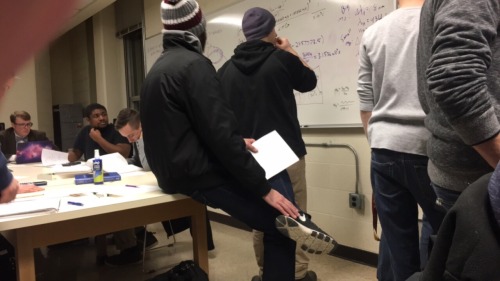
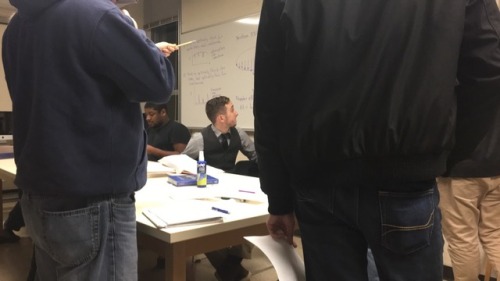
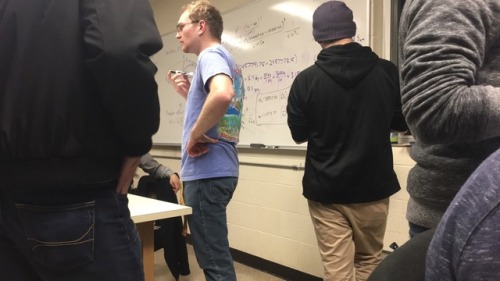
The beautiful chaos of watching 12 frantic astrophysics students try to save a theoretical astronaut from falling into a black hole. I’ve never seen a group of people work so quickly and efficiently before.

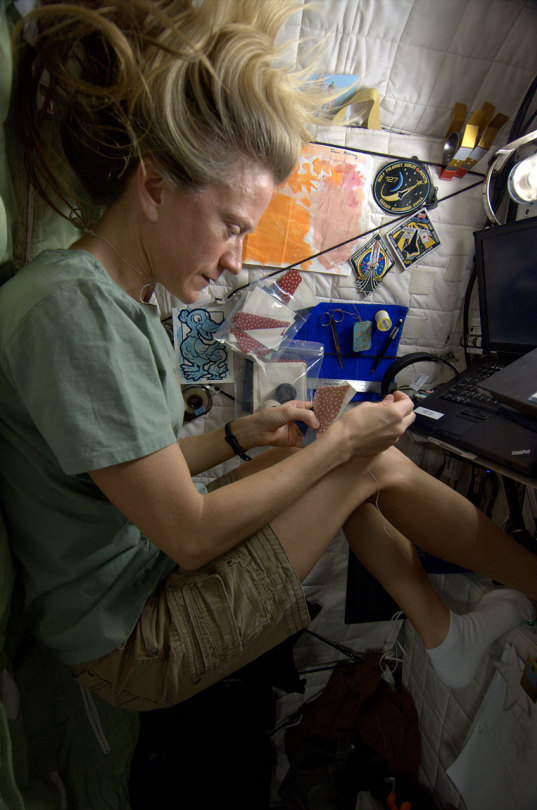
NASA astronaut Karen Nyberg is a self proclaimed crafter. A week ago she made a stuffed dinosaur from scraps on the space station. The little T-rex is made form the lining of Russian food containers and the toy is stuffed with scraps from an old T-shirt. While many toys have flown into space, this is the first produced in space.
Photos: Karen Nyberg, via CollectSpace

NASA Is Considering A Deep Sleep Option for Mars Mission Crew
A NASA-backed study is exploring an innovative way to dramatically cut the cost of a human expedition to Mars — put the crew in stasis.
The deep sleep, called torpor, would reduce astronauts’ metabolic functions with existing medical procedures. Torpor also can occur naturally in cases of hypothermia.
“Therapeutic torpor has been around in theory since the 1980s and really since 2003 has been a staple for critical care trauma patients in hospitals,” aerospace engineer Mark Schaffer, with SpaceWorks Enterprises in Atlanta, said at the International Astronomical Congress in Toronto this week. “Protocols exist in most major medical centers for inducing therapeutic hypothermia on patients to essentially keep them alive until they can get the kind of treatment that they need.”
Coupled with intravenous feeding, a crew could be put in hibernation for the transit time to Mars, which under the best-case scenario would take 180 days one-way.
So far, the duration of a patient’s time in torpor state has been limited to about one week.
“We haven’t had the need to keep someone in (therapeutic torpor) for longer than seven days,” Schaffer said. “For human Mars missions, we need to push that to 90 days, 180 days. Those are the types of mission flight times we’re talking about.”
Impressive Payoffs
Economically, the payoff looks impressive. Crews can live inside smaller ships with fewer amenities like galleys, exercise gear and of course water, food and clothing. One design includes a spinning habitat to provide a low-gravity environment to help offset bone and muscle loss.
SpaceWorks’ study, which was funded by NASA, shows a five-fold reduction in the amount of pressurized volume need for a hibernating crew and a three-fold reduction in the total amount of mass required, including consumables like food and water.
Overall, putting a crew in stasis cuts the baseline mission requirements from about 400 tons to about 220 tons.
“That’s more than one heavy-lift launch vehicle,” Schaffer said.
The Big Chill
The study looked at a two-part system for putting Mars-bound astronauts in stasis and bringing them out. The cooling would be done through an internasal system, which Schaffer admits is “not very comfortable,” but inhaling a coolant has several advantages over reducing body temperatures with external cooling pads. Cooled from the outside, the body is more susceptible to shivering and possible tissue damage, Schaffer notes.
The so-called RhinoChill System lowers body temperature about 1 degree Fahrenheit per hour. Reaching torpor state — between 89 degrees and 93 degrees Fahrenheit — takes about six hours.
Simply stopping the flow of coolant will bring a person out of stasis, though the SpaceWorks study included rewarming pads as a backup and to speed up the waking process in case of an emergency.
An alternative to having the whole crew in stasis is to have one person awake for two to three days, then hibernate for 14 days. By staggering the shifts, no one person would be in stasis for more than 14 days at a time and one crewmember would be awake to monitor the ship, conduct science experiments and handle maintenance chores.
Schaffer also points to a potential psychological advantage to stasis.
“Rather than being stuck in a can for 180 days, you go to sleep, you wake up and you’re there,” he said. More research is needed to assure prolonged stasis is safe, but initial results are promising, Schaffer added.
“We have not seen any show-stoppers on the medical side or on the engineering side,” he said.

NASA Wants Deep Space Habitat Ideas
How will humans live on Mars? Well, NASA’s not really sure yet, but if you’ve got any ideas you can submit them now. The agency has just put out a call for proposals for “deep space habitation prototypes.”
from NASA’s press release:
NASA is soliciting proposals for the development of prototypes for deep space habitats that will give astronauts a place to call home during long-duration missions supporting the agency’s Journey to Mars.
Why Sequencing DNA in Space is a Big Deal
… And How You Can Talk to the Scientists Who Made It Happen

Less than one month ago, DNA had never been sequenced in space. As of today, more than one billion base pairs of DNA have been sequenced aboard the International Space Station, Earth’s only orbiting laboratory. The ability to sequence the DNA of living organisms in space opens a whole new world of scientific and medical possibilities. Scientists consider it a game changer.

NASA astronaut Kate Rubins, who has a background in genomics, conducted the sequencing on the space station as part of the Biomolecule Sequencer investigation. A small, commercial, off-the-shelf device called MinION (min-EYE-ON), manufactured by Oxford Nanopore Technologies in the UK, was used to sequence the DNA of bacteria, a virus and rodents. Human DNA was not sequenced, and there are no immediate plans to sequence human DNA in space.

(Image Credit: Oxford Nanopore Technologies)
The MinION is about the size of a candy bar, and plugs into a laptop or tablet via USB connection, which also provides power to the device. The tiny, plug and play sequencer is diminutive compared to the large microwave-sized sequencers used on Earth, and uses much less power. Unlike other terrestrial instruments whose sequencing run times can take days, this device’s data is available in near real time; analysis can begin within 10-15 minutes from the application of the sample.

Having real-time analysis capabilities aboard the space station could allow crews to identify microbes, diagnose infectious disease and collect genomic and genetic data concerning crew health, without having to wait long periods of time to return samples to Earth and await ground-based analysis.
The first DNA sequencing was conducted on Aug. 26, and on Sept. 14, Rubins and the team of scientists back at NASA’s Johnson Space Center in Houston hit the one-billionth-base-pairs-of-DNA-sequenced mark.

Have more questions about how the Biomolecule Sequencer works, or how it could benefit Earth or further space exploration? Ask the team of scientists behind the investigation, who will be available for questions during a Reddit Ask Me Anything on /r/science on Wednesday, Sept. 29 at 2 p.m. EDT.
The participants are:
Dr. Aaron Burton, NASA Johnson Space Center, Planetary Scientist and Principal Investigator
Dr. Sarah Castro-Wallace, NASA Johnson Space Center, Microbiologist and Project Manager
Dr. David J. Smith, NASA Ames Research Center, Microbiologist
Dr. Mark Lupisella, NASA Goddard Space Flight Center, Systems Engineer
Dr. Jason P. Dworkin, NASA Goddard Space Flight Center, Astrobiologist
Dr. Christopher E. Mason, Weill Cornell Medicine Dept. of Physiology and Biophysics, Associate Professor
Shadow
The US’s GOES-16 weather satellite (still in its testing/non-operational phase) sent back this series of photos taken every 5 minutes today, showing the shadow of the moon marching across the continent. Video shared originally here:
https://twitter.com/UWSSEC/status/899707692364836866
http://www.ssec.wisc.edu
-JBB








Very strange things happen to your body if you spend a year in space
NASA Astronaut Scott Kelly returns to Earth Tuesday night after spending almost a year in space.
But his 340 days aboard the International Space Station (ISS) haven’t been all fun and games.
Our bodies evolved on Earth, so they’re not built for weightlessness — which is exactly why NASA plans to use Kelly to study the long-term effects of spaceflight the human body.
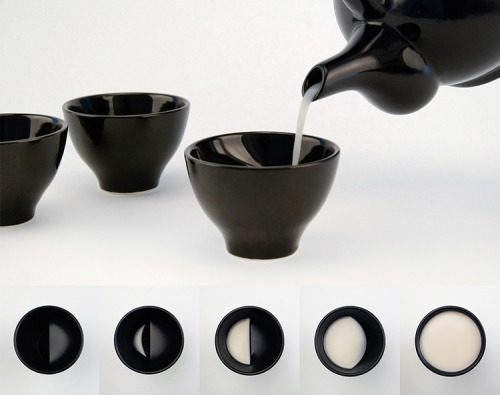

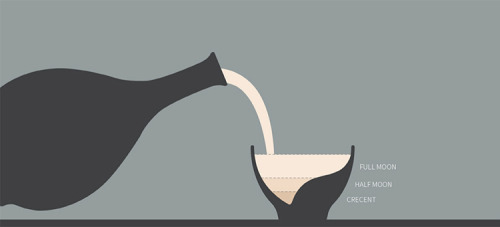
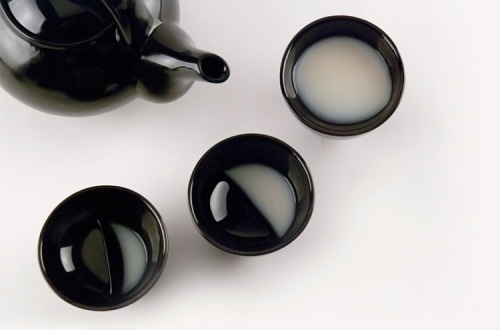


Moon Glass: A Ceramic Cup That Showcases the Different Phases of the Moon the More You Drink From It
South Korean design studio Tale Co., Ltd. has created an ingenious ceramic liquor called the Moon Glass, which displays different phases of the moon as you drink from it. The adorable glasses are available to purchase on their website.
-
 u-n-k-nown reblogged this · 5 years ago
u-n-k-nown reblogged this · 5 years ago -
 scan4dco liked this · 5 years ago
scan4dco liked this · 5 years ago -
 dominatrixeditrix reblogged this · 6 years ago
dominatrixeditrix reblogged this · 6 years ago -
 dominatrixeditrix liked this · 6 years ago
dominatrixeditrix liked this · 6 years ago -
 eclaireevans reblogged this · 6 years ago
eclaireevans reblogged this · 6 years ago -
 eclaireevans liked this · 6 years ago
eclaireevans liked this · 6 years ago -
 fervidasaflame reblogged this · 6 years ago
fervidasaflame reblogged this · 6 years ago -
 fervidasaflame liked this · 6 years ago
fervidasaflame liked this · 6 years ago -
 pjfr2013 reblogged this · 6 years ago
pjfr2013 reblogged this · 6 years ago -
 pjfr2013 liked this · 6 years ago
pjfr2013 liked this · 6 years ago -
 mediagearcollections reblogged this · 7 years ago
mediagearcollections reblogged this · 7 years ago -
 sloggernout liked this · 7 years ago
sloggernout liked this · 7 years ago -
 bigtechgeek reblogged this · 7 years ago
bigtechgeek reblogged this · 7 years ago -
 airpurifiers-blog1 liked this · 7 years ago
airpurifiers-blog1 liked this · 7 years ago -
 yingcao3349-blog liked this · 8 years ago
yingcao3349-blog liked this · 8 years ago -
 watchtheimpossiblekid liked this · 8 years ago
watchtheimpossiblekid liked this · 8 years ago -
 felinedatabase reblogged this · 8 years ago
felinedatabase reblogged this · 8 years ago -
 act-like-this-is-a-clever-url reblogged this · 8 years ago
act-like-this-is-a-clever-url reblogged this · 8 years ago -
 sodapop000 liked this · 8 years ago
sodapop000 liked this · 8 years ago -
 mars-doggler liked this · 8 years ago
mars-doggler liked this · 8 years ago -
 joebobdamethead liked this · 8 years ago
joebobdamethead liked this · 8 years ago -
 angelabeckett2 liked this · 8 years ago
angelabeckett2 liked this · 8 years ago -
 fionaahutton reblogged this · 8 years ago
fionaahutton reblogged this · 8 years ago -
 fionaahutton liked this · 8 years ago
fionaahutton liked this · 8 years ago -
 maevetheeuropan reblogged this · 8 years ago
maevetheeuropan reblogged this · 8 years ago -
 zella-rose liked this · 9 years ago
zella-rose liked this · 9 years ago -
 asimplylucia liked this · 9 years ago
asimplylucia liked this · 9 years ago -
 devilsbastion liked this · 9 years ago
devilsbastion liked this · 9 years ago -
 thinkingonaname reblogged this · 9 years ago
thinkingonaname reblogged this · 9 years ago -
 vlerian-root liked this · 9 years ago
vlerian-root liked this · 9 years ago -
 littleplasticspaceship reblogged this · 9 years ago
littleplasticspaceship reblogged this · 9 years ago -
 evilflip666 reblogged this · 9 years ago
evilflip666 reblogged this · 9 years ago -
 aibhlynn reblogged this · 9 years ago
aibhlynn reblogged this · 9 years ago -
 newtmsa reblogged this · 9 years ago
newtmsa reblogged this · 9 years ago -
 newtmsa liked this · 9 years ago
newtmsa liked this · 9 years ago -
 lylilorden reblogged this · 9 years ago
lylilorden reblogged this · 9 years ago -
 jaybird-with-a-hat liked this · 9 years ago
jaybird-with-a-hat liked this · 9 years ago -
 persian-slipper reblogged this · 9 years ago
persian-slipper reblogged this · 9 years ago

